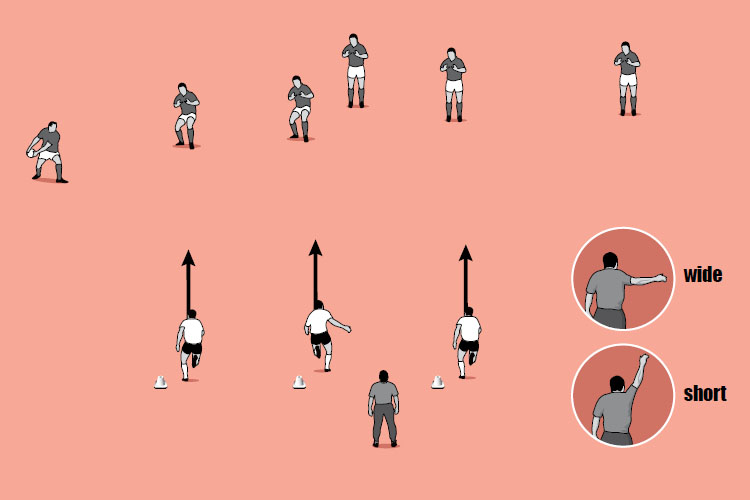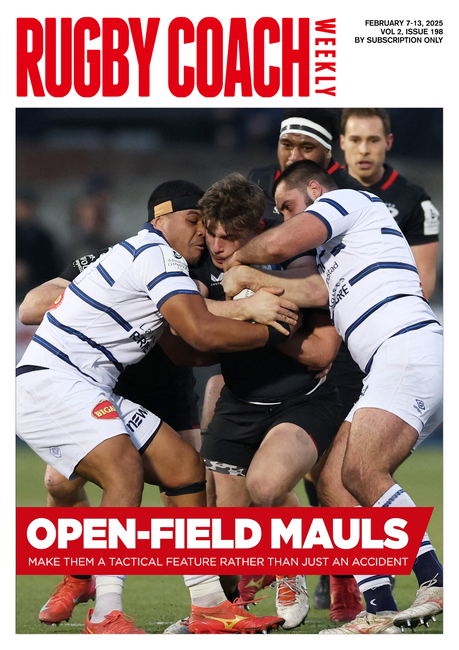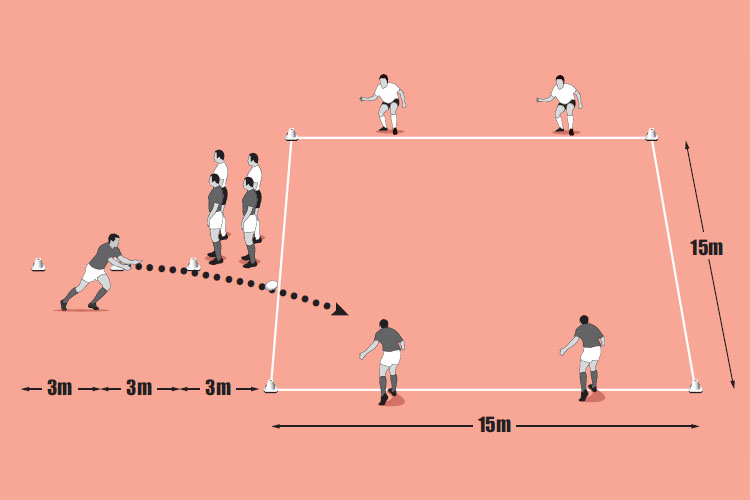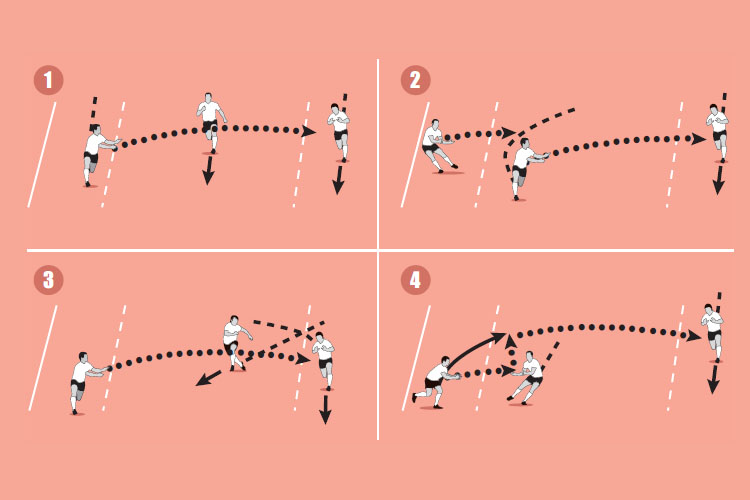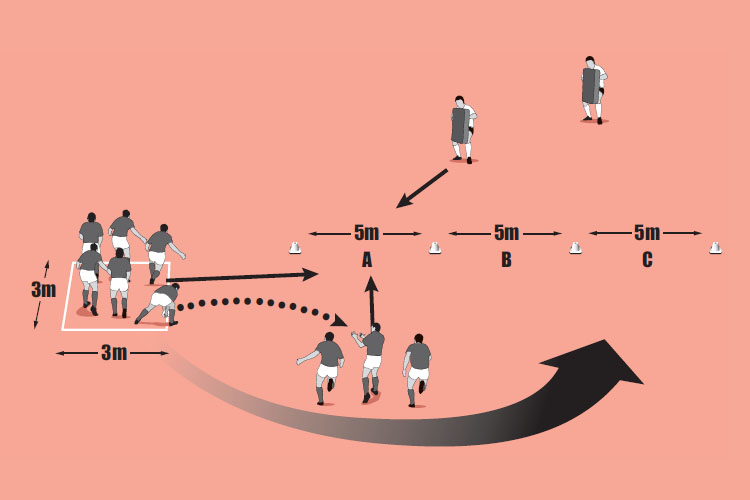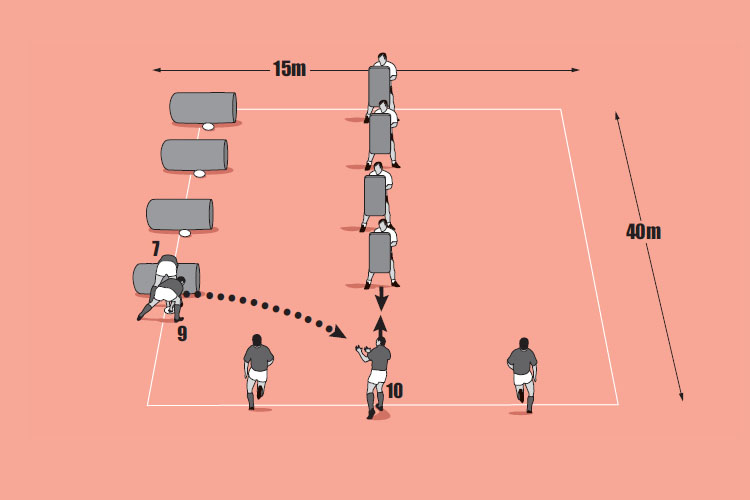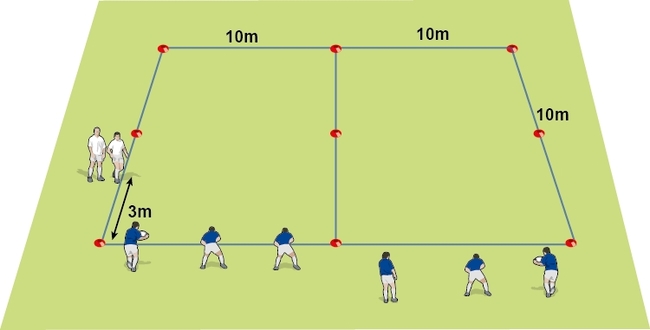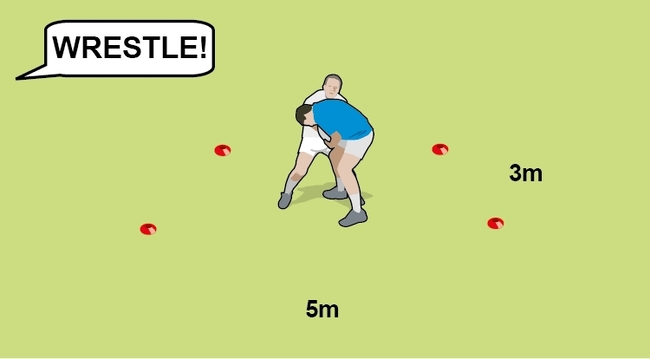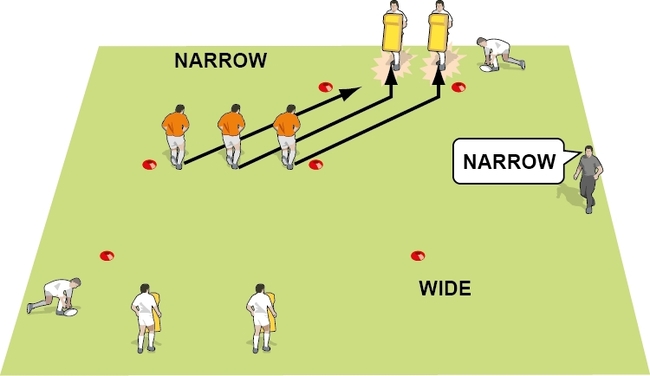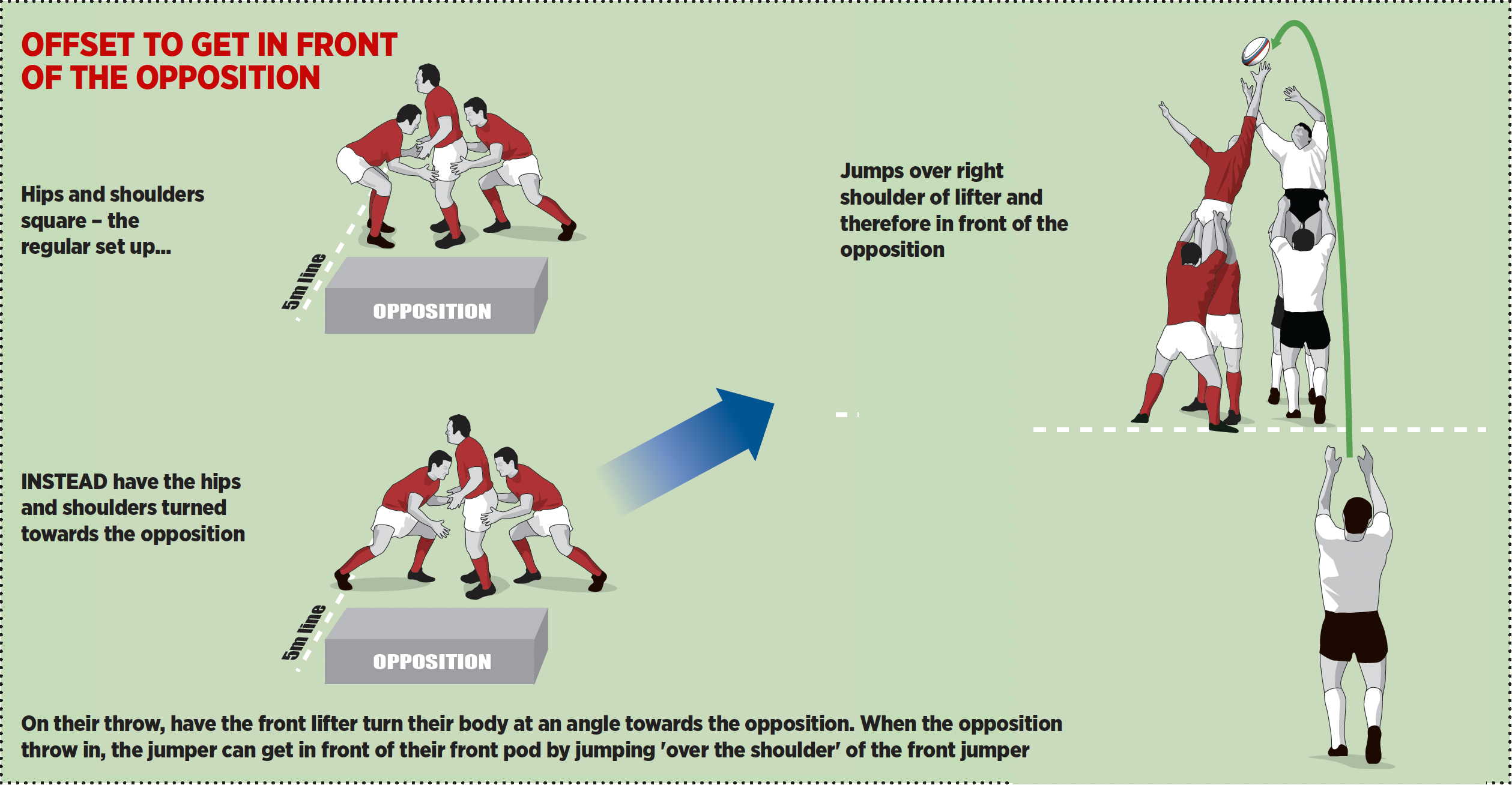Defensive curves
Defensive systems aim to cut down the time and space for the attack. When a defence is outnumbered, it has to drift with the pass. It still has to go forward but must curve out at the same time. This session works on the curves and the decision making behind it.
Warm up time: 5-7
Session time: 8-10
Development time: 10-15
Game time: 10-15
Warm down time: 5-8
What to think about
Defensive line speed is a risk and reward decision. The faster the line speed, the more chance a defender might get left behind or sidestepped by an attacker. However, good line speed means the attack is narrower, because it does not have the time to pass the ball wider. Attacking teams counter this by standing deeper and throwing longer passes. Therefore, this session helps the defence choose whether to run faster forward, or curve out if the ball is moved wider by a deeper attack.set-up
- Defenders: Go forward fast and read the attack. Drift up and out if they move the ball wide.
- Keep your discipline as a line. The inside player is your guide.
- Curve your run as you drift so you remain balanced.
What you get your players to do
Put two defenders on cones (as in picture 1). Get them to run forward over another cone (perhaps 2-5m in front of them). As they advance, three ruck pad holders come forward. A feeder passes to one of two attackers behind the ruck pads. If he passes to the first attacker, the defenders drive into the two pads in front of them. If he passes to the wider attacker, then the defenders drift out.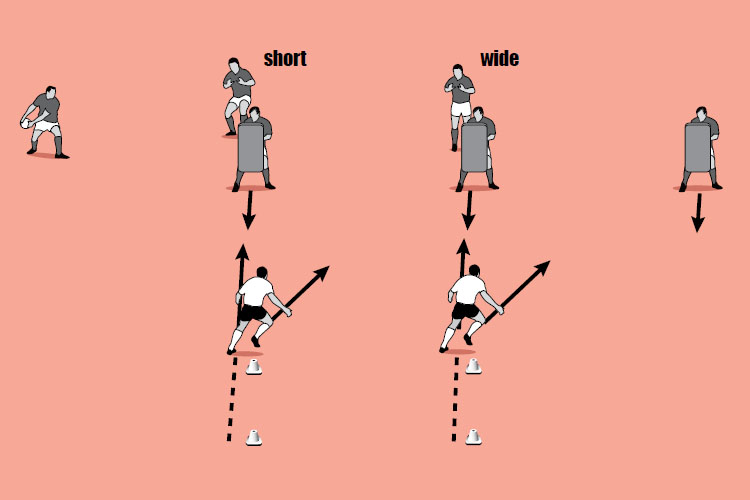
Development
Change the widths of the attacking players. Have the ruck pad holders run up faster. Take away the pads and have three attackers moving forward (but only use two-handed touch tackles on the chest). Run an attacking move (like a switch or miss pass).Related Files
Game situation
Put three defenders about 5m away from an attacking line in a 30m square. Put a feeder and five attackers in a line. Stand behind the defenders (as in picture 2). Indicate to the attack as the ball is passed out whether you want them to go wide or short. The defenders have to run forward, close down the space and then drift if necessary. Use two-handed touch tackles on the chest before moving to full contact.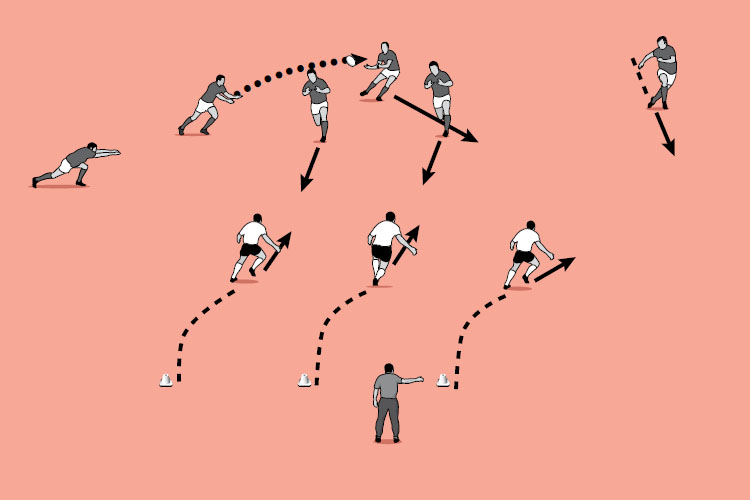
What to call out
- “Curve as you drift so you don’t lose your balance and keep in sight of your inside defender”
- “Keep inside the attack – push them out”
- “Communicate with confidence”
Newsletter Sign Up
Coaches Testimonials

Gerald Kearney, Downtown Las Vegas Soccer Club

Paul Butler, Florida, USA

Rick Shields, Springboro, USA

Tony Green, Pierrefonds Titans, Quebec, Canada
Subscribe Today
Be a more effective, more successful rugby coach
In a recent survey 89% of subscribers said Rugby Coach Weekly makes them more confident, 91% said Rugby Coach Weekly makes them a more effective coach and 93% said Rugby Coach Weekly makes them more inspired.
Get Weekly Inspiration
All the latest techniques and approaches
Rugby Coach Weekly offers proven and easy to use rugby drills, coaching sessions, practice plans, small-sided games, warm-ups, training tips and advice.
We've been at the cutting edge of rugby coaching since we launched in 2005, creating resources for the grassroots youth coach, following best practice from around the world and insights from the professional game.
